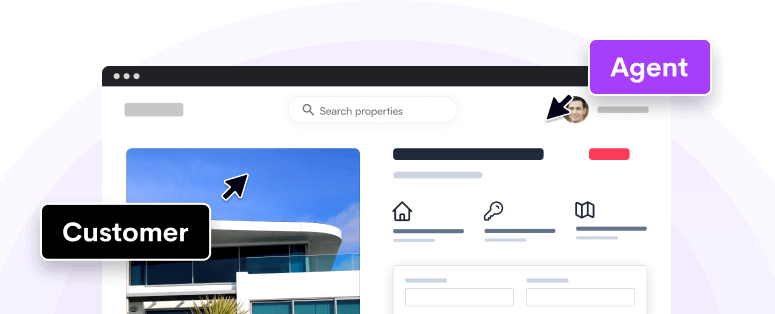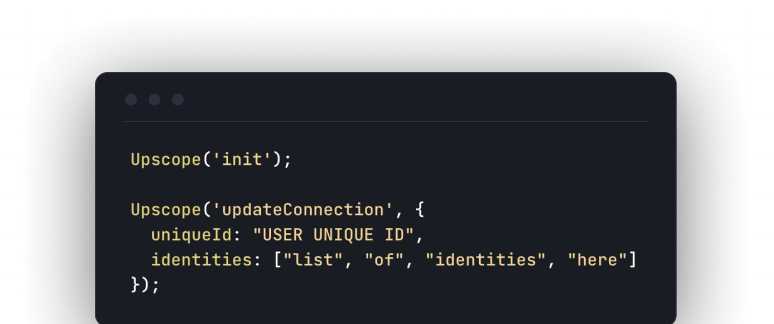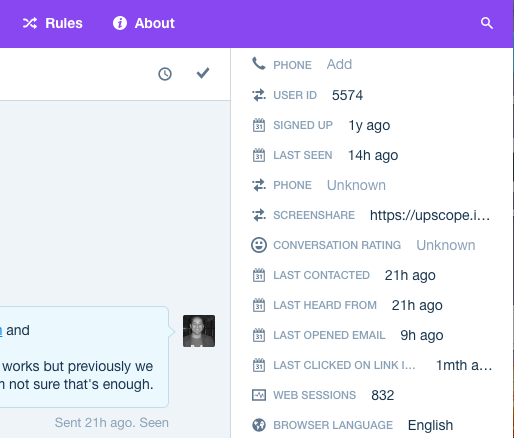Adding just a few of the right custom attributes makes support flow for every
chat. The custom attributes below include tried and tested methods for
resolving queries 30% faster as well as understanding the customers level of
engagement and improving upselling.
Related: See Our Entire Intercom Email
Campaign
Also see: Show Users Through Your Website Like Never
Before
For devs: How Upscope Integrates with Intercom API using
Ruby
Custom attributes that improve every chat
Each company uses different attributes depending on their product and below is
a great list to consider for your own support and sales growth.
'Admin’ link for fast editing of that user’s features and permissions


It’s hard to function without this one.
This is a link from Intercom directly to your own websites admin page.
In one click, go from a chat with a user to adjusting the plans or features
they just asked for.
It’s the difference between talking to a support agent who says ‘I will do
that for you now’ vs ‘I will need to take a minute to find your account’.
‘Instant Screen Share’ link to see their screen in one click


See what they see in one click from Intercom and solve problems 30%+ faster.
Don't spend 10 minutes writing instructions.
In one click, see their screen AND use your mouse on their screen to click
for them.
Add this using Upscope, which is an
official app on the intercom app
store.
Do this without the user or agent needing to install anything, it'll change
your support team's life and is used by account management for onboarding.
‘Annual saving’ so you can tell them how much they could save

This custom attribute might for example say: Annual saving $316
If they’ve been on a monthly plan for a while and they like the product this
helps remind them of the saving they make if they switch to an annual plan.
You can also set up an automated email to do the same.
'Price plan’ / 'Team size' for upselling

See how much they’re paying already and how many team members are using it.
Over time, software companies realise that a large customer expanding their
use of that company's product can bring more revenue than a dozen smaller new
companies signing up.
This can either be reminding them of the new feature the development team has
built or starting the conversation to spread the product's use from the sales
team to the account management team, for example.
‘Job title’ to send content explaining the product in a way they prefer

Knowing their exact job title gives you perspective on which educational
article / content to send them and can be essential to effective onboarding.
A manager might be interested in your KPI or usage reporting whereas a regular
employee primarly needs to know how to use the key features.
‘Sessions count’ to see how much they’re using it

Are they using it a lot?
Are they using it enough?
Depending on your app this can tell you if someone is a very happy user of the
app and possibly one of those promoters we are always looking for, you know,
people who would love to give us a testimonial or case study.
If they’re not using it a lot, that’s a good time to ask questions if the
opportunity arises.
‘Feature use count’ to check if they use your key central feature

When onboarding, have they got to the feature which gives them a small
internal ‘aha’ moment where they got to understand the value of your service?
When chatting, check the 'feature use count' to ask why they might not have
used that feature.
Of course, you can also automate it by sending an email if they have not used
it.
‘Teammates’ to see if their team has been added when they sign up

If they have not added team mates then send them that team invite link or
explain the pricing for team members.
You can also encourage them to invite team members by increasing the trial
period from 7 days to 14 days when they do.
This works well if they’re buying products individually within a large company
which still happens oddly enough.
‘Has cancelled’ for finding out the problem

Well, if they’re talking to you then you know there’s a problem but it’s good
to have it there for when they talk to you and you don’t realise they’ve hit
cancel on their subscription.
Find out why as they may not understand a feature or needed a custom plan. The
number of times they were not aware of a feature or some smart way to use the
product is incredible. It’s not cost, it’s ROI.
‘Call’ to phone them using VOIP in one click.

Use a service like Toky for making calls in one click from
Intercom.
It can automatically log inbound and outbound calls, record them and click to
call inside Intercom.
Often these services give you a call button to add to the home page of the
website and offer further integrations so across your CRM, Facebook and other
platforms.
Below are some theoretical attributes which could be built
‘Events list’ to see the path they took to get there

Some live chat systems have this but we’re talking about a key path they took
and which bits they may have skipped.
Good for understanding if the user really went through that onboarding process
and if you include events for common errors they make, you’ll see what they
don’t understand.
‘Alert me when they are back’ to respond to a key user on time.

This is a feature we’d like to have within Intercom.
Sometimes we need someone to be online to ask them more questions or run a
test with them.
We’d like to be able to chat to someone and then click this button so we get a
warning alert when they’re back online. Then we’ll run the test.
‘Report bug’ link to send conversations and details to a developer

This would ideally take the user id, the admin link, the browser information
and everything else to send as a ticket to the development team.
It would be nice if they were on Intercom to see things for themselves but
that’s not really how things pan out.
There is software for this out there and I’ll add it in here when I find it
again.
‘Customer health score’ score so you know if they’re not getting value

A health score can be calculated by combining key
indicators of use including session counts, uploads, team mates added,
consecutive days of use etc.
It will vary according to your app but is the fastest way to understand
customers who are more likely to cancel a subscription over time.
This takes more work than just adding sessions and it’s not easy to put
together but a great concept.
See Intercom’s own docs on custom attributes
See Upscope’s full Intercom
email campaign to onboard customers
We’ve laid out the full Upscope email
campaign for intercom including the entire process from sign up, installation,
trial and purchase. You can use this as a template to configure your own
campaign or check if you’re missing anything. You can see it
here.






